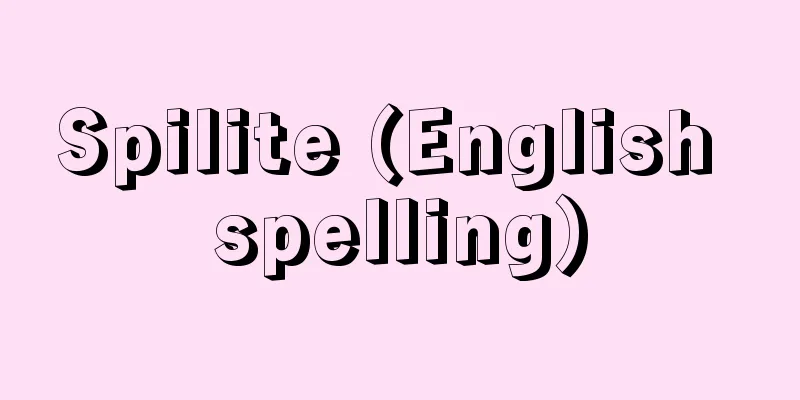Yoshihide Nakayama

|
Novelist. Born on October 5, 1900 in Oya Village, Fukushima Prefecture (present-day Taishin, Shirakawa City). His real name was Yoshihide. While studying English at Waseda University, he founded the coterie magazine "Tou" with Yokomitsu Riichi and others. After graduating, he became a teacher. In 1933 (Showa 8), he was forced to resign by the principal. He lived a life of despair with his sick wife. In 1935, his wife and father died. He won the 7th Akutagawa Prize for "Atsumonozaki" (1938). He solidified his status as a writer with "Ishibumi" (1939). Yoshihide recalled that he wrote these works as "a kind of will and testament." "Monument" is entrusted to the three Madaraishi brothers (the second brother, Mojiro, was Yoshihide's grandfather), who excelled in swordsmanship, and tells the tragic fate of fallen samurai who lived during the tumultuous period of the Meiji Restoration. After World War II, he broke new ground in historical fiction. "New Swordsmen's Tales" (1955) was included in the "Nakayama Yoshihide Self-Selected Historical Novel Collection," a set of eight volumes (1957). He won the 17th Noma Literary Award for his historical novel "Shoan" (1964), which depicts Akechi Mitsuhide. On the other hand, he also wrote highly acclaimed works such as "The Moon on the Table" (1963), a biography of Yokomitsu Riichi that also serves as an autobiography of Yoshihide, who lived a gloomy and painful half-life, and the essays "Two Lives" (1960) and "My Literary World" (1966). In 1966 (Showa 41), he received the Japan Art Academy Prize. In 1967, he became a member of the Japan Art Academy. He died in August 1969. He was baptized the day before his death. His other works include "The End of Tinian" (first published in 1948, a collection of stories in 1949) and the unfinished work "Bashoan Tosei" (1965-69, published posthumously in 1970). In 1971, a monument to him was erected in his birthplace, Oshinmura, and a literary monument was erected in Naritasan Park in Chiba Prefecture. [Yamazaki Kazuaki] "The Complete Works of Nakayama Yoshihide, 9 volumes (1971-72, Shinchosha)" ▽ "Aoyagi Masaru: On Nakayama Yoshihide" (included in Waseda Bungaku, 1941, Vol. 4)" ▽ "Nakayama Yoshihide" (included in Hirano Ken Essays on Writers, 1971, Shinchosha) [Reference item] |Source: Shogakukan Encyclopedia Nipponica About Encyclopedia Nipponica Information | Legend |
|
小説家。明治33年10月5日、福島県大屋村(現白河(しらかわ)市大信(たいしん))に生まれる。本名議秀。早稲田(わせだ)大学英文科時代、横光利一(りいち)らと同人雑誌『塔』を創刊。卒業後教師生活を送る。1933年(昭和8)校長の強要により退職。病妻を抱え失意の生活を送る。35年妻、父が死去。『厚物咲(あつものざき)』(1938)で第7回芥川(あくたがわ)賞受賞。『碑(いしぶみ)』(1939)で作家的地位を固めた。これらの作品を義秀は「私の一種の遺言状」のつもりで執筆したと回想している。『碑』は剣術に秀(すぐ)れた斑石(まだらいし)三兄弟(次兄の茂次郎は義秀の祖父)に託して、維新の激動期に生きた没落士族の数奇な運命をつづっている。第二次世界大戦後、歴史小説に新境地を拓(ひら)いた。『新剣豪伝』(1955)を含む『中山義秀自選歴史小説集』全8巻(1957)として発刊。明智光秀(あけちみつひで)を描いた歴史小説『咲庵(しょうあん)』(1964)で第17回野間(のま)文芸賞受賞。一方、横光利一の伝記であるが、そのかたわらで暗澹(あんたん)たる苦患の半生をたどった義秀の自伝にもなっている『台上の月』(1963)や、随筆『二つの生涯』(1960)、『私の文壇風月』(1966)など評価が高い。1966年(昭和41)芸術院賞受賞。67年芸術院会員。昭和44年8月死去。死の前日洗礼を受ける。ほかに『テニヤンの末日』(初出1948、小説集1949)、未完の作『芭蕉庵桃青(ばしょうあんとうせい)』(1965~69、没後1970刊)がある。71年出生地の大信村に記念碑が、千葉県成田山公園に文学碑が建った。 [山崎一穎] 『『中山義秀全集』全9巻(1971~72・新潮社)』▽『青柳優「中山義秀論」(『早稲田文学』1941・四所収)』▽『『中山義秀』(『平野謙作家論集』所収・1971・新潮社)』 [参照項目] |出典 小学館 日本大百科全書(ニッポニカ)日本大百科全書(ニッポニカ)について 情報 | 凡例 |
Recommend
Mau Mau (English spelling) MauMau
...An armed struggle against British rule, center...
The Tripitaka of Goryeo - The Tripitaka of Goryeo
The Tripitaka engraved and printed in Goryeo. The ...
Latitude Observatory - Idokansokujo
An institution for observing and studying the phe...
X-ray inspection
This is an examination method that obtains inform...
Water gods
A god of water. He lives in rivers, lakes, ponds, ...
Turdus
...A bird of the passerine family, family Muscica...
Alexander's Feast
…In addition to his many operas, Handel gradually...
Qu Yuan (English name)
[Born] Around the 27th year of King Xuan (343 BCE)...
Foreign Service Senior Recruitment Examination - Gaimukouminsaiyoujokyuushiken
...However, in the United States, the tradition o...
Jacob Jordaens
Flemish painter. Born and died in Antwerp. In 160...
Kerala (State)
A state in the southwest of India. Also known as t...
Stepparent and child - Keishinshi
The relationship between the child of a husband&#...
ESR method - ESR method
… There are two common methods for producing ingo...
Pipa carvalhoi (English spelling)
… [Takahiro Matsui]. … *Some of the terminology t...
Saizō
The clown who plays the role of the tayu in the M...









